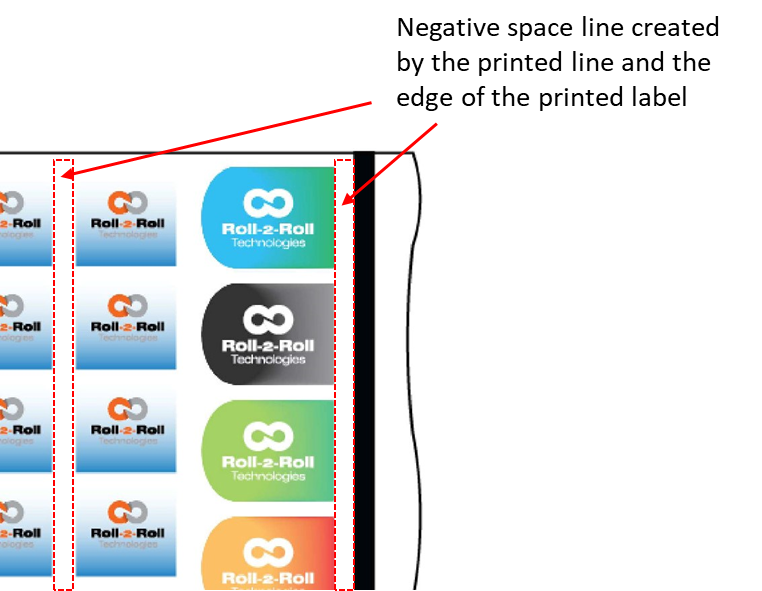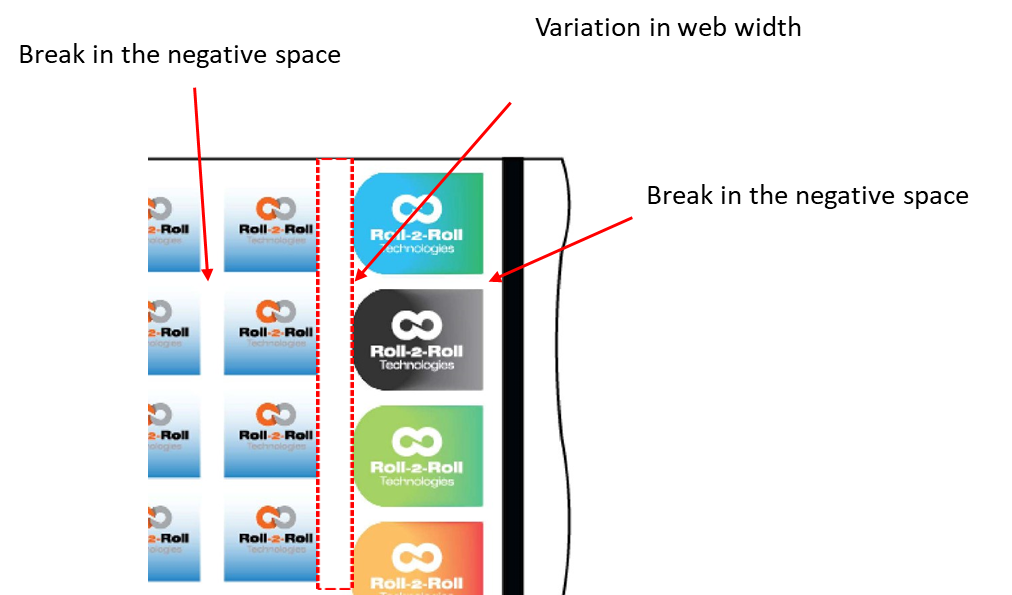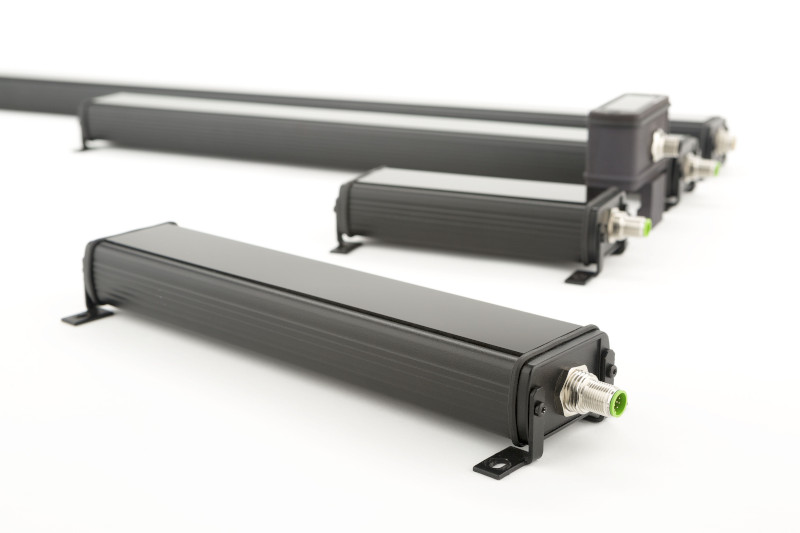In negative space web guiding dealing with the consistency of the negative space is the same as if we were dealing with the consistency of a printed line for line guiding.
The line has to be of the same width and color in order for the sensor to track it. Any variation and the sensor will not recognize it. The same thing happens when using the negative space as guiding feature.
Negative spaces in the cross machine direction are lines formed by a non-printed area.
In the graphic below we can see how these are formed from the borders of printed features, such as the edges of labels.

The negative space is consistent in its hue or color tone. It is white, which is the background of the web on which the labels are printed. However, we can see in the graphic that the width is has some consistency issues.

The graphic above shows two of the most common width inconsistencies dealing with negative space web guiding: irregular edges of printed labels and breaks by negative spaces in between printed labels.
Dealing with irregular label edges will require a special application of contrast guiding.
In this case it might be simpler to look for another printed feature to guide off. For example, we can see the labels on the right side have a curved edge on the left side and a straight edge on the right side. Of course, the labels have different color hues, but they do have a straight edge that is next to a negative space. There is a web guiding solution for guiding off this feature which we will talk about in a future post.
Interested in this solution right now? Don't wait and contact us right now to help you out
Space between labels in the machine direction
When dealing with negative spaces created by separation of labels, such as seen on the graphic, we can see that the negative space line would lose the consistency of the width on each of these breaks. In a sense, it is an intermittent line. Additionally, we can see the labels on the left side of the graphic have a degradation. As the degradation gets closer to the hue of the negative space, the tracking sensor might interpret this as a widening of the negative space. The sensor would quit tracking the negative space as it would consider it different than what it was calibrated for. Of course, we also have a solution for this particular issue, and as before we will address these solutions in a future post.
You can contact us right now if you require inmediate assistance with a similar application or any other issue width tracking printed features on a web.

